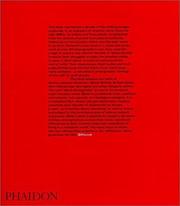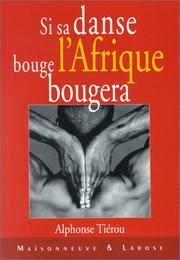| Listing 1 - 7 of 7 |
Sort by
|
Book
ISBN: 2872096213 2747511251 9782747511254 Year: 2001 Publisher: Louvain-la-Neuve Paris Academia-Bruylant L'Harmattan
Abstract | Keywords | Export | Availability | Bookmark
 Loading...
Loading...Choose an application
- Reference Manager
- EndNote
- RefWorks (Direct export to RefWorks)
Philosophy, African --- Blacks - Race identity --- Heidegger, Martin, - 1889-1976 --- Blacks
Book
Year: 2001 Publisher: Bogotá: Instituto Caro y Cuervo,
Abstract | Keywords | Export | Availability | Bookmark
 Loading...
Loading...Choose an application
- Reference Manager
- EndNote
- RefWorks (Direct export to RefWorks)
Slavery --- Blacks --- Slave trade --- Slave trade --- Spain --- Latin America
Book
Year: 2001 Publisher: Helsinki: Academia scientiarum Fennica,
Abstract | Keywords | Export | Availability | Bookmark
 Loading...
Loading...Choose an application
- Reference Manager
- EndNote
- RefWorks (Direct export to RefWorks)
Creole dialects, English --- English language --- Spanish language --- Blacks --- Canon law

ISBN: 2850257613 9782850257612 Year: 2001 Publisher: Paris : Hazan,
Abstract | Keywords | Export | Availability | Bookmark
 Loading...
Loading...Choose an application
- Reference Manager
- EndNote
- RefWorks (Direct export to RefWorks)
Blacks --- Noirs --- Pictorial works. --- Ouvrages illustrés --- Paris (France) --- Social life and customs --- Moeurs et coutumes --- Ouvrages illustrés --- Black people --- Blacks - France - Paris - Pictorial works.

ISBN: 0714840149 9780714840147 Year: 2001 Publisher: London: Phaidon,
Abstract | Keywords | Export | Availability | Bookmark
 Loading...
Loading...Choose an application
- Reference Manager
- EndNote
- RefWorks (Direct export to RefWorks)
A study of black identity. It is a story, told in pictures and words, of contemporary black artists exploring issues of their own identity in photography. With a historical introduction, the main part of the volume addresses contemporary work produced since 1985. Prior to this date there was no organized black photography movement to speak of and extremely few established black photographers in the commercial and arts worlds. Since 1985 a number of black photographic artists have emerged into public view through their address to identity issues. Stuart Hall introduces and contextualizes 160 photographs by approximately 40 black photographers who have produced bodies of work about racial, national, gender and sexual identity. The introduction provides a guide to terminology and the arguments, integrated with a brief history of black photographers' work on identity themes prior to 1985. A number of key photographers and historical movements are referred to and illustrated including, for example, the work of James Van der Zee and Roy DeCarava. The main part of the book focuses on work by photographers since 1985 worldwide, including Faisal Abdu Allah; Ajamu; Oladele Bamgboye; Chila Burman; Clement Cooper; Armet Francis; Joy Gregory; Sunil Gupta; Lyle Harris; Dave Lewis; Estaquio Neves; Eileen Perrier; Coreen Simpson; Robert Taylor; Maxine Walker; and others.
Photography, Artistic --- Blacks in art --- Negroes in art --- Artistic photography --- Photography --- Photography, Pictorial --- Pictorial photography --- Art --- Aesthetics

ISBN: 2706815434 9782706815430 Year: 2001 Publisher: Paris Maisonneuve et Larose
Abstract | Keywords | Export | Availability | Bookmark
 Loading...
Loading...Choose an application
- Reference Manager
- EndNote
- RefWorks (Direct export to RefWorks)
Dans Dooplé, loi éternelle de la danse africaine, Alphonse TIEROU nous présentait les dix mouvements de base de la danse invariants sur tout le continent africain. Il ouvrait ainsi la voie d'une création chorégraphique africaine contemporaine, en lui donnant la base théorique écrite qui lui faisait défaut. Avec cet ouvrage-ci, l'auteur va plus loin en envisageant la danse sous l'angle de l'économie. Il montre d'abord que la danse est le ciment de la culture africaine. L'éradication des langues vernaculaires, notamment avec la colonisation, a eu pour conséquence l'incompréhension et le refus de cette danse, sur laquelle le regard porté est à la fois fasciné et terrifié. Présentes en toutes occasions (le baptême et la dation des noms, le verdict du juge... ), cérémonielles ou de divertissement, les danses constituent pourtant une mémoire collective voire une banque de données d'une richesse inestimable. Et Alphonse TIEROU rétablit les liens entre la danse et la sculpture africaines comme éléments d'un univers artistique commun et donc plus signifiant. La création en matière de danse africaine ne produit pas de biens de consommation. Mais il est démontré qu'appliquer un modèle de développement à un pays sans tenir compte de la culture de ce pays est suicidaire. L'auteur démontre que la danse africaine, en produisant des biens culturels, peut non seulement jouer le rôle de catalyseur, de moteur pour l'évolution des mentalités, mais aussi renforcer la cohésion Nord-Sud. Ainsi, la danse africaine demeure encore un savoir inconnu dont beaucoup de facettes restent à découvrir, dont de nombreuses richesses sont insoupçonnables. Si sa danse bouge, l'Afrique bougera !
Dance --- Danse --- Africa --- Afrique --- Civilization --- Civilisation --- Dance, Black --- Social aspects --- Dances --- Dancing --- Amusements --- Performing arts --- Balls (Parties) --- Eurythmics --- Black dance --- Blacks --- Black people --- Dance - Africa --- Dance - Social aspects - Africa

ISBN: 0521802199 0521001943 1107122988 9786612486517 0511673671 0511674864 0511672888 0511670338 0511522290 1282486519 051167161X 9780521802192 9780521001946 9780511674860 9780511671616 9780511670336 9780511522291 9781107122987 9781282486515 6612486511 9780511673672 9780511672880 Year: 2001 Publisher: Cambridge : Cambridge University Press,
Abstract | Keywords | Export | Availability | Bookmark
 Loading...
Loading...Choose an application
- Reference Manager
- EndNote
- RefWorks (Direct export to RefWorks)
The South African Truth and Reconciliation Commission (TRC) was set up to deal with the human rights violations of apartheid during the years 1960-1994. However, as Wilson shows, the TRC's restorative justice approach to healing the nation did not always serve the needs of communities at a local level. Based on extended anthropological fieldwork, this book illustrates the impact of the TRC in urban African communities in Johannesburg. While a religious constituency largely embraced the commission's religious-redemptive language of reconciliation, Wilson argues that the TRC had little effect on popular ideas of justice as retribution. This provocative study deepens our understanding of post-apartheid South Africa and the use of human rights discourse. It ends on a call for more cautious and realistic expectations about what human rights institutions can achieve in democratizing countries.
Reconciliation --- Post-apartheid era --- Political aspects --- South Africa --- Politics and government --- Apartheid --- Retribution. --- Human rights --- Criminal law. Criminal procedure --- National movements --- Race relations --- Retribution --- #SBIB:328H413 --- #SBIB:39A11 --- #SBIB:39A73 --- Social exchange --- Punishment --- Revenge --- Blacks --- Segregation --- Instellingen en beleid: Zuid-Afrika --- Antropologie : socio-politieke structuren en relaties --- Etnografie: Afrika --- South Africa. --- Commission for Truth and Reconciliation (South Africa) --- South African Truth Commission --- TRC --- Truth and Reconciliation Commission (South Africa) --- Race relations. --- Race question --- Black people --- Law --- General and Others --- Reconciliation - Political aspects - South Africa --- Post-apartheid era - South Africa --- Apartheid - South Africa --- South Africa - Politics and government - 1994 --- -South Africa - Race relations
| Listing 1 - 7 of 7 |
Sort by
|

 Search
Search Feedback
Feedback About
About Help
Help News
News